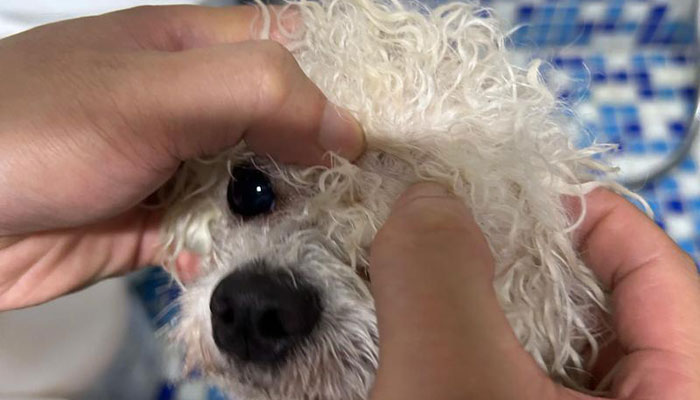Three Methods for the Best Flea Treatment for Dogs

Summer flea troubles for your dog? Three methods to help you find the best flea treatment for dogs.Summer is here, and dogs are far more likely to get fleas than in winter. Seeing your dog restless and unable to eat or sleep, scratching frantically, is heartbreaking for any pet parent. Plus, fleas make owners hesitant to cuddle their dogs, making it even harder to resist those pleading looks for affection. So, how do you get rid of fleas once they appear, and how do you choose the best flea treatment for your dog? Below are three reliable methods that effectively eliminate fleas while reducing the risk of skin diseases.
Method 1: Flea Collar with Insecticide – The Most Convenient Best Flea Treatment for Dogs
Using an insecticide-impregnated flea collar is a top choice for many pet owners seeking the best flea treatment for dogs, offering strong practicality for pets. The collar features numerous tiny pores through which the flea medication is slowly released, evenly coating most of the dog’s body. This means that whenever your dog encounters fleas during walks or playtime with other pets, the collar immediately repels and kills them without requiring frequent additional application.
However, this method has limitations: prolonged use may cause skin allergies in dogs. Additionally, flea medication or powder designed for flea collars can be applied topically to your dog for short-term use (e.g., sprinkled on areas prone to fleas like the back of the head or back). However, you must ensure your dog doesn’t accidentally ingest it, and keep children away from these agents to prevent skin contact.
Method Two: Combing with a Fine-Toothed Flea Comb (Suitable for Short-Haired Dogs) — An Optimal Auxiliary Flea Treatment for Dogs
For short-haired dogs, combing with a fine-toothed flea comb serves as an excellent supplementary flea treatment. When combing through the dog’s coat with a fine-toothed comb, adult fleas tend to get caught in the teeth. When handling them, take care not to crush the fleas directly (as this may cause tapeworm eggs inside them to scatter, potentially leading to infection if licked by the dog). Instead, it is recommended to trap the fleas on adhesive tape or drown them in water mixed with detergent.
It’s important to note that this supplementary method has significant limitations: First, it is time-consuming and requires repeated combing. Second, it cannot eradicate fleas entirely—it only removes adult fleas, while residual flea larvae or eggs will continue to hatch. Therefore, it must be used in conjunction with other methods.
Method Three: Regular Administration of Long-Acting Deworming Medication — The Long-Term Solution for Best Flea Treatment for Dogs
Once a dog is infested with fleas, its living environment (such as the ground around kennels or wall corners) easily becomes a breeding ground for fleas. At this point, long-acting deworming becomes the key component of the best flea treatment for dogs. Flea collars and combs have limited effectiveness for “long-term protection,” whereas regular administration of long-acting deworming medication effectively addresses this issue.
Currently, 60-day cycle deworming medications are the mainstream choice for the best flea treatment for dogs. They offer high safety and reduce recurrence rates. Examples include external parasite preventatives like Bivado and Baypet Clear (which can be mixed into dog food). These provide up to 12 weeks of protection with minimal impact on the dog’s health and are safe for use on pregnant or nursing dogs. However, it is crucial to strictly follow the product instructions or your veterinarian’s guidance when administering these treatments to avoid risks associated with improper dosing.
admin
-
Sale!

Washable Pet Cooling Pad for Cats and Dogs
$10.99Original price was: $10.99.$9.99Current price is: $9.99. This product has multiple variants. The options may be chosen on the product page -
Sale!

Washable Cat Window Hammock Cooling Bed
$23.99Original price was: $23.99.$22.99Current price is: $22.99. -
Sale!

Tropical Amphibian Rainforest Tank, Lizard Cage
$38.99Original price was: $38.99.$36.99Current price is: $36.99. -
Sale!

Silent 4-in-1 Waterproof Charging Dog Hair Trimmer
$49.88Original price was: $49.88.$47.99Current price is: $47.99.